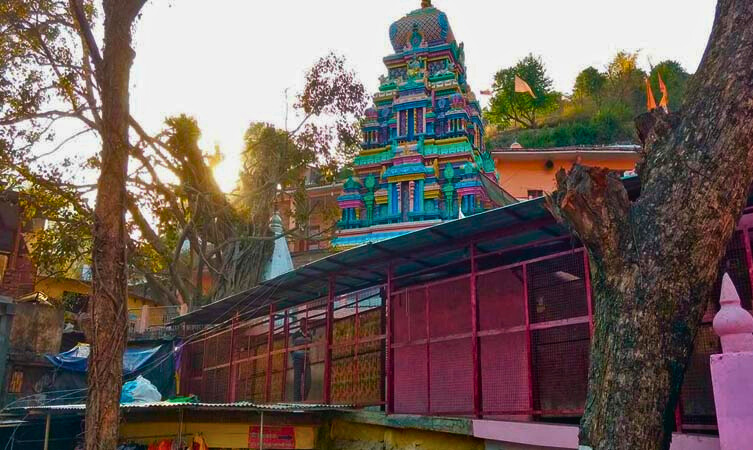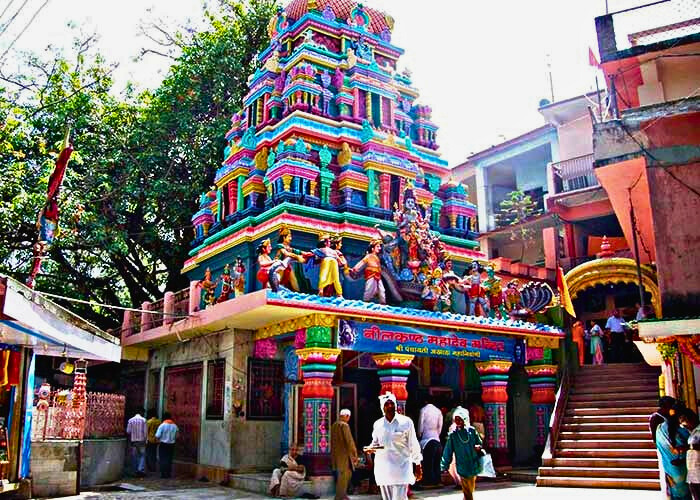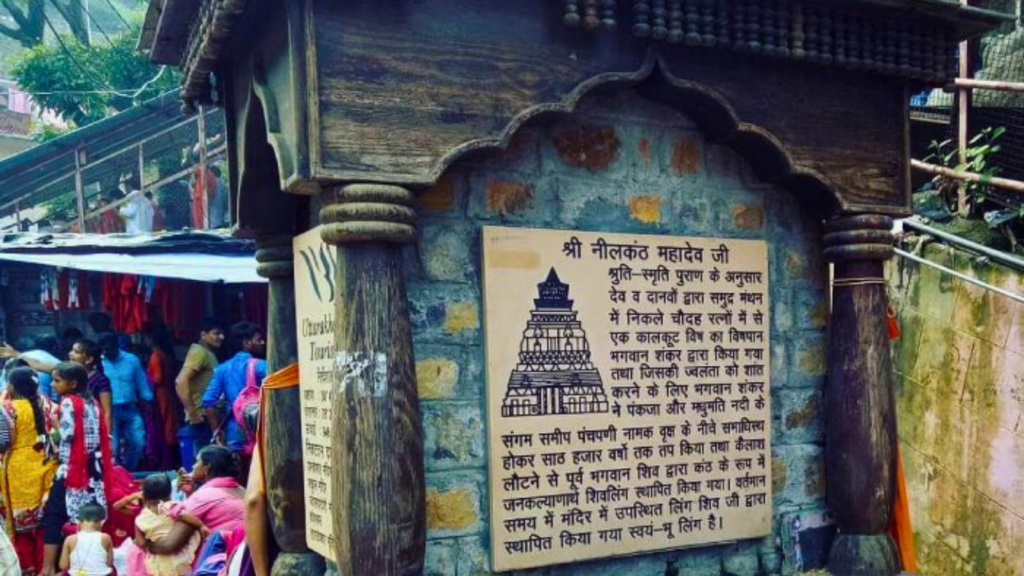Neelkanth Mahadev Temple: A Testament to Spiritual Grandeur
The Neelkanth Mahadev Temple is a spiritual oasis dedicated to Lord Shiva, one of the most revered deities in Hindu mythology. Located approximately 32 kilometers from Rishikesh, this temple stands at an altitude of 1330 meters, offering not just a deeply spiritual experience but also a visual treat for visitors. With its rich mythology, tranquil setting, and architectural splendor, Neelkanth Mahadev Temple is more than just a place of worship—it is a journey into the heart of India’s cultural and spiritual heritage.
Mythological Significance
The Neelkanth Mahadev Temple holds immense mythological importance, rooted in the ancient tales of the Samudra Manthan, or the Churning of the Ocean of Milk. According to Hindu scriptures, the gods (Devas) and demons (Asuras) joined forces to churn the ocean to obtain Amrit, the nectar of immortality. During the churning, several precious items emerged from the ocean, including the deadly poison Halahala, which had the potential to destroy the universe.
To save creation, Lord Shiva consumed the poison, which lodged in his throat, turning it blue. This act earned him the epithet “Neelkanth,” meaning “The Blue-Throated One.” The site of the Neelkanth Mahadev Temple is believed to be the very spot where this event took place, making it a significant pilgrimage destination for devotees seeking spiritual purification and blessings.
Architecture and Design
The Neelkanth Mahadev Temple is a fine example of traditional North Indian temple architecture. The temple’s sanctum sanctorum houses a Shiva Lingam, the symbolic representation of Lord Shiva, which is the focal point of worship. The temple structure is adorned with intricate carvings depicting various deities and scenes from Hindu mythology, including the Samudra Manthan.
The temple’s spire (shikhara) rises majestically, symbolizing the connection between heaven and earth. Vibrant frescoes and paintings on the temple walls narrate episodes from Hindu epics, offering a visual delight to visitors. The entrance to the temple is marked by an ornate archway, leading to a spacious courtyard where devotees can perform rituals and meditate.
The surrounding area is equally captivating. The temple is enveloped by dense forests and overlooks the gurgling waters of the Ganga, creating an atmosphere of peace and sanctity. The natural beauty of the location complements the spiritual aura, making it an ideal retreat for those seeking solace and introspection.
Religious Practices and Festivals
The temple is a hub of religious activities throughout the year, with devotees flocking in large numbers to pay homage to Lord Shiva. The rituals performed at Neelkanth Mahadev Temple are deeply rooted in Vedic traditions. The primary offerings include water, milk, honey, and Bilva leaves, all of which hold symbolic significance in Shiva worship. Devotees often observe fasts and chant mantras, believing that these acts bring them closer to the divine.
One of the most significant events at the temple is the annual Maha Shivaratri festival, which celebrates the union of Lord Shiva and Goddess Parvati. Thousands of devotees gather to participate in elaborate rituals, processions, and cultural performances. Another major event is the Shravan Maas (monsoon month), considered highly auspicious for worshipping Lord Shiva. During this time, the temple witnesses a surge in pilgrim footfall as devotees undertake arduous journeys to seek blessings.
Spiritual Significance
The Neelkanth Mahadev Temple is not just a place of worship; it is a spiritual haven where visitors can experience inner peace and transformation. The temple’s serene environment, combined with the chanting of hymns and the fragrance of incense, creates an ambiance conducive to meditation and self-reflection. Many believe that visiting the temple helps in cleansing the soul, removing past sins, and attaining spiritual liberation (moksha).
The journey to the temple is itself a spiritual experience. Pilgrims often trek through scenic trails, crossing dense forests and cascading waterfalls. This journey is symbolic of the spiritual path—challenging yet rewarding, leading to divine enlightenment.


For more information about nearby attraction of Neelkanth Mahadev Temple you can visit : click here
Surrounding Attractions
The Neelkanth Mahadev Temple is surrounded by a plethora of natural and spiritual attractions that enhance the overall experience of visiting the region. Here are some of the most notable nearby attractions:
1.Patna Waterfall:
Located approximately 6 kilometers from Rishikesh, the Patna Waterfall is a picturesque spot accessible through a short trek. Known for its pristine water cascading down rocky slopes, this waterfall is surrounded by verdant forests, offering a perfect retreat for nature lovers and photography enthusiasts. The serene environment makes it an excellent spot for picnics and meditation.
2.Garud Chatti Waterfall:
Just a few kilometers from Lakshman Jhula, the Garud Chatti Waterfall is a lesser-known gem. Surrounded by dense greenery, this seven-tiered waterfall is a treat for trekkers and adventure seekers. The trek to the falls is moderately challenging but rewarding, as the sight of the cascading water amidst the forest is truly captivating.
3.Lakshman Jhula and Ram Jhula:
These iconic suspension bridges in Rishikesh are architectural marvels and hold great mythological significance. Spanning the Ganga River, these bridges are believed to be the sites where Lakshman and Lord Rama crossed the river during their exile. The bridges offer panoramic views of the surrounding hills and the river below, making them popular spots for photography and spiritual contemplation. The nearby markets and cafes add to the charm.
4.Parmarth Niketan Ashram:
One of the largest ashrams in Rishikesh, Parmarth Niketan is a hub for spiritual seekers. Known for its yoga and meditation programs, the ashram also hosts the famous evening Ganga Aarti, a mesmerizing ritual of lights, chants, and devotion. The ashram’s tranquil environment, coupled with its focus on holistic well-being, makes it a must-visit destination.
5.Rajaji National Park:
Located within a short drive from Rishikesh, Rajaji National Park is a haven for wildlife enthusiasts. Spanning over 800 square kilometers, the park is home to a diverse range of flora and fauna, including elephants, tigers, leopards, and over 300 species of birds. Visitors can embark on jungle safaris to explore the park’s rich biodiversity.
6.Adventure Activities in Rishikesh:
For thrill-seekers, the region around Rishikesh offers a host of adventure activities. River rafting on the Ganga is a popular choice, with rapids ranging from beginner-friendly to highly challenging. Other activities include bungee jumping, zip-lining, and camping by the river. These adrenaline-pumping experiences provide a stark contrast to the spiritual serenity of the Neelkanth Mahadev Temple.
7.Beatles Ashram (Chaurasi Kutia):
Once an ashram where The Beatles stayed and meditated in the late 1960s, this site is now an iconic attraction. The ashram’s ruins, adorned with graffiti and murals, exude a bohemian charm. Visitors can explore the meditation halls and enjoy the serene surroundings, which make it a perfect spot for introspection and creativity.
8.Triveni Ghat:
A sacred ghat in Rishikesh, Triveni Ghat is a confluence of three rivers—the Ganga, Yamuna, and Saraswati. The evening Ganga Aarti performed here is a spiritually uplifting experience, where hymns, prayers, and the sight of floating diyas create an ethereal ambiance. The ghat is also a popular spot for performing rituals and seeking blessings.
Conservation and Sustainability
Given its cultural and spiritual importance, efforts are being made to preserve the sanctity and natural beauty of the Neelkanth Mahadev Temple. Authorities and local communities actively engage in initiatives to maintain cleanliness and promote eco-friendly practices. Pilgrims are encouraged to avoid littering and respect the environment, ensuring that the temple remains a pristine haven for generations to come.
Preparation and Checklist for the Trek
If you want to trek Neelkanth Mahadev Temple ,the trek to Neelkanth Mahadev Temple from Rishikesh is approximately 14-16 kilometers through lush forests, scenic landscapes, and occasional steep trails. Here are the key things to consider:
1. Essentials to Pack
- Clothing:
- Comfortable, breathable trekking clothes (preferably quick-dry materials).
- A light jacket or sweater if trekking during the early morning or winter months.
- A raincoat or poncho during the monsoon season.
- Cap or hat to shield from the sun.
- Footwear:
- Sturdy, comfortable trekking shoes with good grip.
- Extra pair of socks in case the trail is muddy or wet.
- Backpack:
- A lightweight, waterproof backpack to carry your essentials.
2. Food and Water
- Carry at least 2-3 liters of water to stay hydrated throughout the trek.
- Light snacks such as energy bars, nuts, biscuits, or fruits for quick energy.
- Electrolyte packets or ORS to replenish salts lost through sweat.
3. Navigation and Safety
- A physical map or GPS-enabled phone for navigation, although the trail is generally marked.
- A trekking stick to help with balance on uneven terrain.
- First-aid kit with essentials like band-aids, antiseptic, pain relievers, and any personal medications.
- A flashlight or headlamp with extra batteries, especially if you plan to return late.
- A whistle for emergencies.
4. Miscellaneous Items
- Sunscreen and sunglasses to protect from UV rays.
- Insect repellent to avoid bug bites in the forested areas.
- A small towel or handkerchief.
- Camera or smartphone to capture the scenic beauty.
- Plastic bags for waste disposal to keep the trail clean.
What to Expect During the Trek
The trek from Rishikesh to Neelkanth Mahadev Temple is a moderately challenging one, suitable for trekkers with a basic level of fitness. Here’s a breakdown of what you’ll encounter:
1. Starting Point
- The trek often begins from Lakshman Jhula in Rishikesh. This iconic suspension bridge offers stunning views of the Ganga River and is a spiritual and scenic spot to start your journey.
- You’ll pass through bustling streets of Rishikesh before entering quieter trails leading into the forest.
2. The Trail
- The trail is a mix of paved pathways, dirt tracks, and rocky terrain, winding through dense forests, occasional villages, and small streams.
- You’ll encounter a variety of flora and fauna, making it a paradise for nature lovers. Monkeys are commonly seen along the route, so keep your food secured.
3. Scenic Spots
- En route, you’ll come across breathtaking viewpoints overlooking the Ganga River and surrounding hills.
- Small shrines and ashrams dot the path, offering places to rest and soak in the spiritual ambiance.
4. Challenges
- Some parts of the trail can be steep and require careful footing.
- The weather can change rapidly, especially during monsoons, so be prepared for sudden rain or muddy trails.
Tips for a Successful Trek
- Start Early: Begin your trek early in the morning to avoid the midday heat and to ensure you have enough time to return before dark.
- Trek in a Group: Trekking with companions is safer and more enjoyable. If you’re solo, try to join other trekkers you meet along the way.
- Stay Hydrated: Sip water regularly to avoid dehydration but avoid drinking too much at once.
- Respect Nature: Do not litter or disturb wildlife. Carry all your waste back with you.
- Take Breaks: Rest at regular intervals to avoid fatigue, especially if you’re not accustomed to long treks.
- Interact with Locals: Villagers and shopkeepers along the trail are usually friendly and may provide insights or directions.
Reaching the Temple
After trekking for about 4-5 hours, you’ll arrive at the serene Neelkanth Mahadev Temple. Here’s what to do upon reaching:
1. Offer Prayers
- Perform rituals like offering water, milk, and Bilva leaves to the Shiva Lingam.
- Meditate in the tranquil ambiance of the temple premises.
2. Explore the Area
- Take in the stunning views of the Shivalik hills and the Ganga River valley.
- Visit the nearby shops for prasad or souvenirs.
3. Rest and Recharge
- Enjoy a meal or snacks from the temple’s canteen or nearby eateries.
- Rest before beginning your return journey.
Return Journey
- By Trek: If you have the energy, retrace your steps back to Rishikesh. Descending is generally easier but still requires caution.
- By Vehicle: If trekking back feels daunting, you can opt for a shared jeep or taxi from the temple to Rishikesh.
Best Time for the Trek
- October to March: The weather is cool and pleasant, ideal for trekking.
- July to September: Monsoon adds a lush green beauty to the trail, but be prepared for slippery paths and leeches.
- April to June: While summer can get warm, early morning treks are still enjoyable.
Why Trekking to Neelkanth is Special
- Spiritual Connection: Walking to the temple allows you to connect deeply with the spiritual significance of the place, as many devotees believe that the journey itself is a form of penance.
- Natural Beauty: The trek offers a rare combination of dense forests, clear streams, and panoramic views, making it a rejuvenating experience.
- Adventure: The physical challenge of the trek adds an adventurous element, making the journey as memorable as the destination.

FAQs About Neelkanth Mahadev Temple
1. What is the significance of the Neelkanth Mahadev Temple?
The temple is dedicated to Lord Shiva and is associated with the Samudra Manthan, where Lord Shiva consumed poison to save the universe, turning his throat blue and earning the name “Neelkanth.”
2. Where is the Neelkanth Mahadev Temple located?
The temple is situated approximately 32 kilometers from Rishikesh in the Shivalik hills of Uttarakhand, at an altitude of 1330 meters.
3. What are the temple’s opening hours?
The temple is open daily from 5:00 AM to 6:00 PM.
4. Is there an entry fee for visiting the temple?
No, there is no entry fee for visiting the temple.
5. What is the best time to visit the temple?
The best time to visit is during the Maha Shivaratri festival or the Shravan Maas. The weather from October to March is also pleasant for a visit.
6. How can I reach the temple?
The temple is accessible via taxi or bus from Rishikesh. Trekking is also an option for adventure enthusiasts.
7. Are there any facilities available for visitors?
Yes, the temple provides basic amenities like clean restrooms, drinking water, and shops selling puja items and snacks.
8. Can I take photographs inside the temple?
Photography inside the sanctum is usually prohibited. However, you can take pictures of the temple’s exterior and surrounding areas.
9. What should I wear when visiting the temple?
Modest attire is recommended as it is a place of worship. Comfortable shoes are advised if you plan to trek.
10. Are there any nearby attractions to explore?
Yes, nearby attractions include Patna Waterfall, Garud Chatti Waterfall, Lakshman Jhula, Ram Jhula, Parmarth Niketan, Rajaji National Park, and more .
Conclusion
The Neelkanth Mahadev Temple is more than a pilgrimage site; it is a profound confluence of spirituality, mythology, and nature. Set amidst the breathtaking Shivalik hills, this temple encapsulates the essence of Lord Shiva’s benevolence and the enduring power of faith. The journey to the temple, whether by road or through a serene trek, is as transformative as the destination itself, offering moments of introspection and connection with the divine.
Visiting the temple is an opportunity to immerse oneself in the timeless traditions of Hindu culture while marveling at the awe-inspiring natural surroundings. The nearby attractions, from cascading waterfalls to historical ashrams, add depth to the experience, making it not just a spiritual retreat but also an adventure into the heart of Uttarakhand’s beauty.
For devotees and travelers alike, Neelkanth Mahadev Temple stands as a symbol of endurance, sacrifice, and the eternal quest for inner peace. It serves as a reminder that amidst life’s challenges, the divine presence offers guidance, solace, and strength.



Leave a Reply